Business Community
Batana, a traditional Croatian fishing skiff, nearly ready to set sail
History is being brought to life at the BoatShop.
Volunteers under the direction of master shipwright Mike Vlahovich have been building a traditional Croatian fishing skiff called a batana since early July.
Vlahovich hopes the project will spark an on-going cultural exchange between Gig Harbor and Sumartin on the island of Brač, Croatia. Both have commercial fishing and boatbuilding traditions.
Longtime Harbor resident Vlahovich now lives in Sumartin, where his father was born.
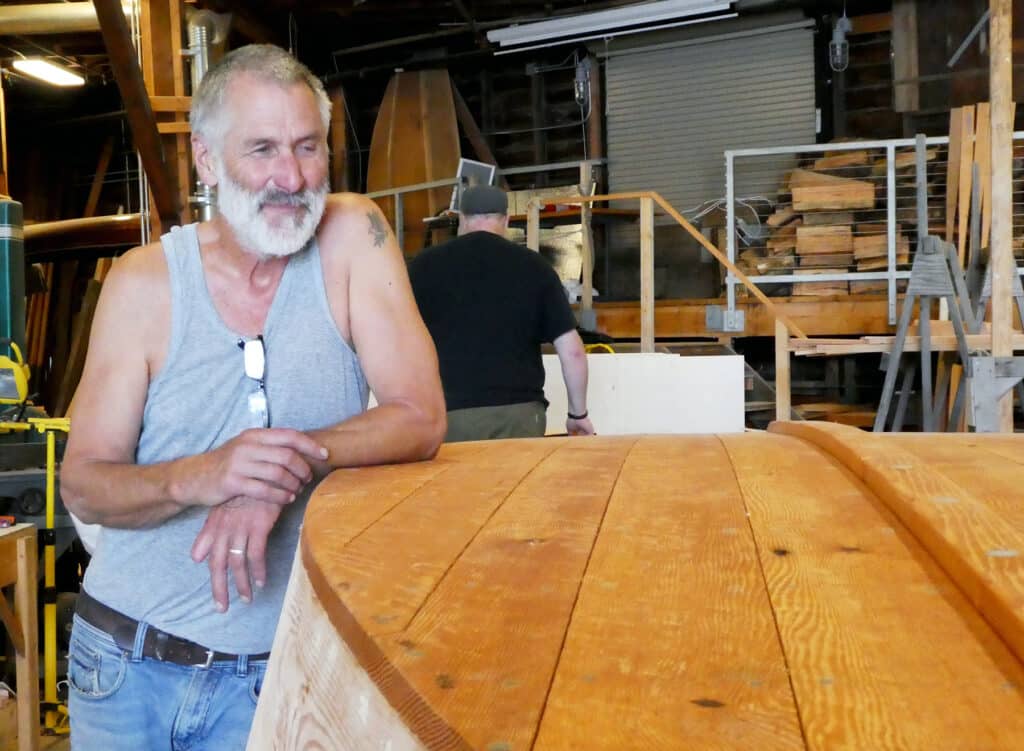
Mike Vlahovich with the batana boat under construction at the BoatShop in Gig Harbor.
What is a batana?
Croatian fisherman have used batanas since the 1750s. Back then, some batanas were quite large. Now they generally range from 4 to 8 meters in length. The batana being built at the BoatShop is on the small side, about 13 feet from bow to stern.
A batana is characterized by its flat bottom, which curves slightly toward the ends. The sides are also flat. Sometimes there’s a small deck, or none at all.
Because the bottom of the boat is flat, a batana is generally used for fishing in shallow water, close to shore.
Batana material
It can either be rowed standing up using 14-foot oars, or fitted with a small sail.
The red-and-white sail that will be used on Vlahovich’s boat was made in Pt. Townsend from recycled sailcloth by Emiliano Marino. Marino is a master sailmaker who wrote the book “The Artful Sailor.”
The wood for the Gig Harbor batana is recycled old growth fir donated by Pacific Northwest Timber of Port Townsend.
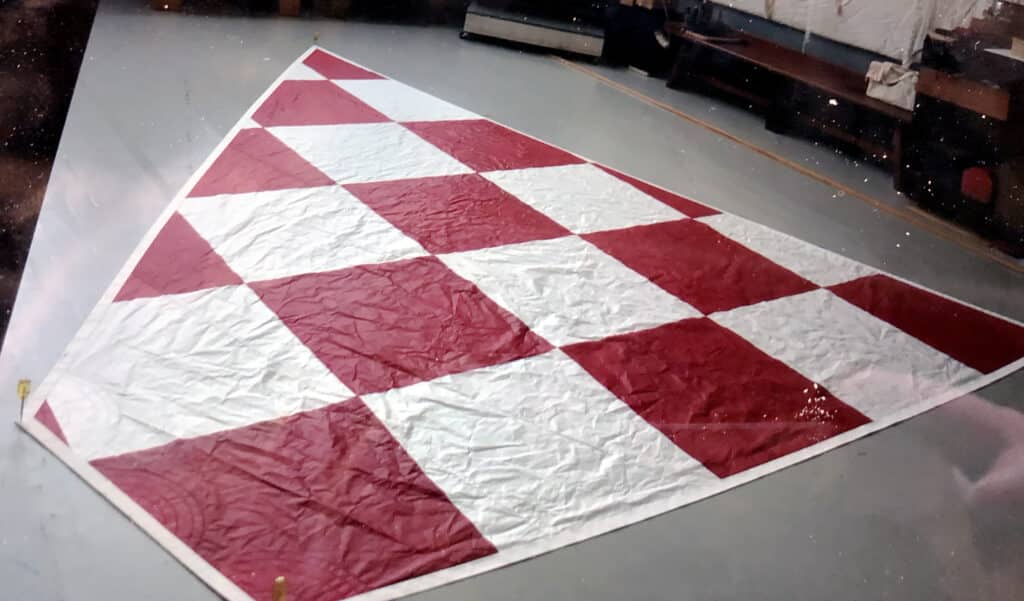
The batana sail was created by master sailmaker Emiliano Marino. The red-and-white checkered pattern echoes the coat of arms on the flag of Croatia.
Although it’s small, the sturdily built batana is surprisingly heavy. After the hull was finished, it took a dozen men to turn the boat over to work on the inside, Vlahovich said. (He’s also looking for volunteers to help move it from the BoatShop to a trailer on Sept. 2 or 3.)
Local Croatian connections
Many Gig Harbor families trace their roots to the Adriatic Sea island of Brač and the town of Sumartin. Among them are the Skansie brothers, who established a boatbuilding business in Gig Harbor in the early 1900s.
Members of the Babich, Gilich and other local fishing families also came from Sumartin, Vlahovich said.
Vlahovich’s own family has ties to both Sumartin and Gig Harbor. Although his father was born on Brač, Mike was raised in Tacoma and cofounded the Tacoma Maritime Festival in the early 1990s.
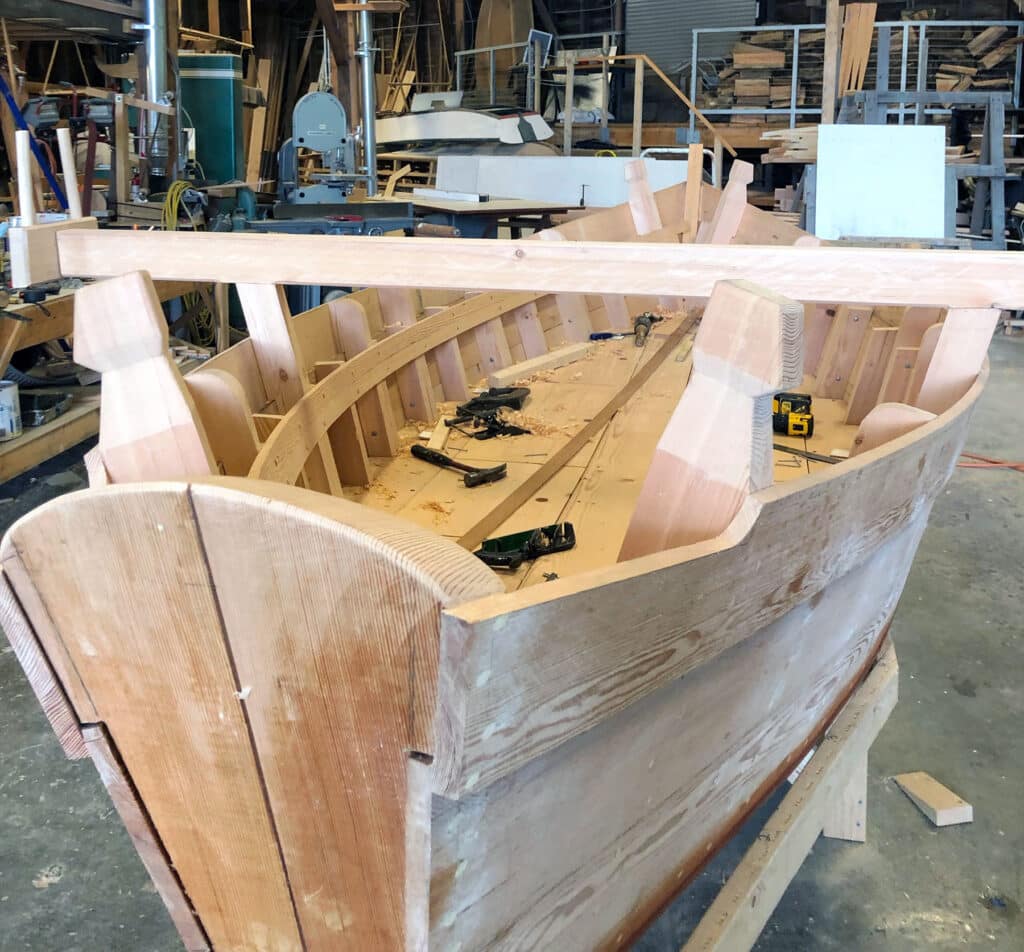
The batana boat under construction at the BoatShop in Gig Harbor.
He founded the Coastal Heritage Alliance in 2003 to help preserve the vessels and stories of American fishing communities. He also performed the inventory of the contents of the Skansie Netshed for the city of Gig Harbor.
A few years ago, when he was giving a lecture at a maritime conference in Europe, he met a woman from Sumartin. They are now married and live in his father’s village in Croatia.
Volunteers build the batana
The batana is being built entirely by volunteers, including two who have become regulars on the project.
Jonathan Cunningham has been working on the batana nearly every day. He’s returning a favor. Vlahovich helped Cunningham restore a boat that had been in the family for three generations several years ago.
“It’s a fishing boat that was built in Gig Harbor by the Skansies in 1926,” Cunningham said. “Mike did lots of the restoration on it. I helped whenever I could and I learned a lot.”
Cunningham signed up right away when he heard about the batana project. He has helped with steaming the boards so they can be gradually bent to proper shape. He’s also spent time sanding, clamping, nailing and on numerous other tasks.
“I learn something new every time I work with Mike. That’s why I like helping so much,” he said.
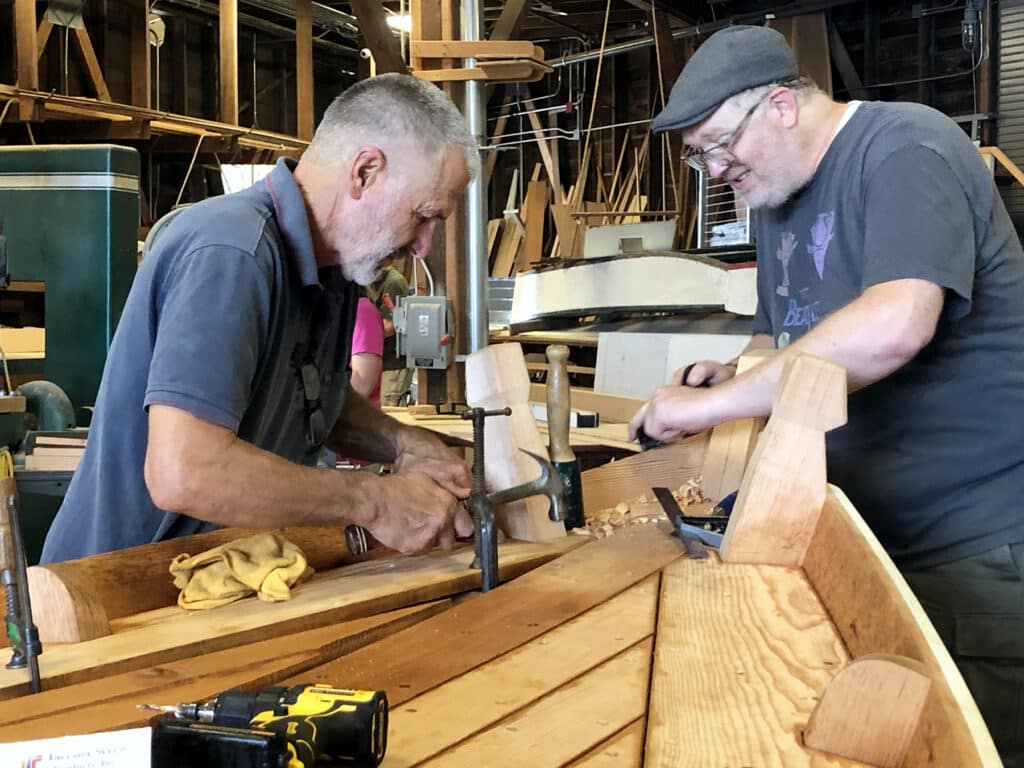
Mike Vlahovich (left) and Jonathan Cunningham work on the deck portion of the batana.
Mike Leach is another regular volunteer with roots in Sumartin. His great grandfather and grandfather moved to Gig Harbor from there.
“My great grandpa married into the Skansie family,” he said. “And it turns out that Mike is my cousin and his dad and my grandpa were best friends.
“So much boat building talent came to Gig Harbor from that little village, it’s pretty remarkable. But Mike is the only one, so far, who’s gone back there to live.”
How it started
The project has been in the works for several years. It started when organizers of Port Townsend’s Wooden Boat Festival approached Vlahovich with the idea.
“Lots of the preliminary plans were in place, but then things changed during the COVID shutdown,” he said.
The batana became a project without a home. Until Vlahovich turned to his longtime friend, BoatShop President Guy Hoppen, to arrange for space to build the batana.
“The BoatShop has the tools and the space we need, and they also have a good team of volunteers,” Vlahovich said. “Plus, the BoatShop benefits because it brings new people in and they learn about the kinds of programs that are offered.”
The BoatShop is also taking advantage of the opportunity to create more events around the batana project.
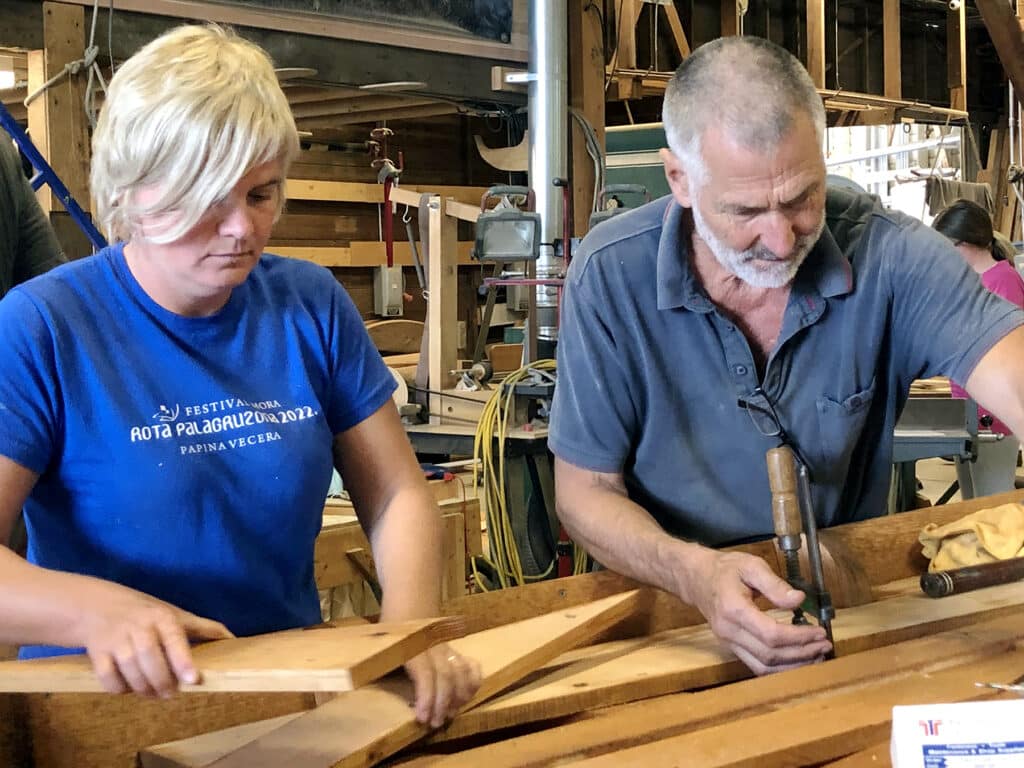
Lovorka Šimunec Vlahovich and her husband, Mike, work on the deck portion of the batana.
What’s next
Vlahovich’s wife Lovorka Šimunec Vlahovich arrived from Croatia earlier this month with her two daughters, 12-year-old Bruna Hrestak and 9-year-old Franka. They are helping put the finishing touches on the batana and promoting the Maritima Educare program they lead in Croatia.
On Monday, the girls helped in a Kids Day event at the BoatShop. They showed other youngsters how to do caulking and other boat-building tasks.
On Sept. 3, the batana will be christened in a public ceremony at the BoatShop. Vlahovich plans to name it Brač, in honor of the island he now calls home.
The christening event will feature Croatian music, caulking demonstrations by Bruna and Franka and other activities. Vlahovich will discuss the batana project, boat building traditions in Sumartin and the connections between Gig Harbor and Croatia. Lovorka will share information about Maritima Educare.
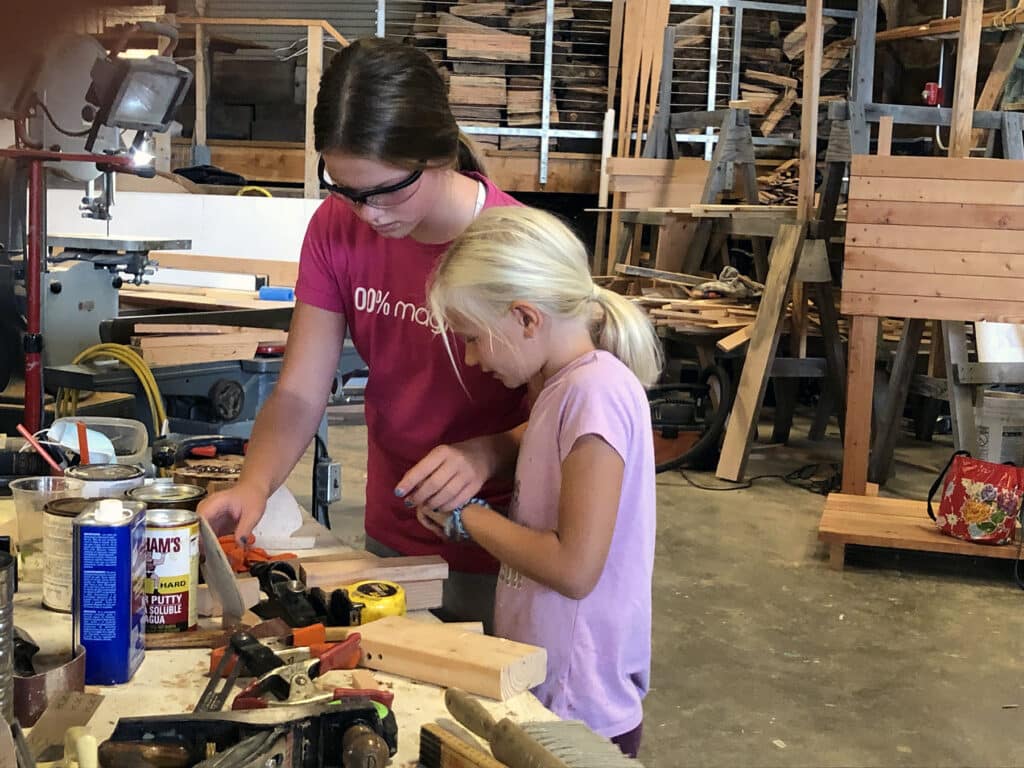
Bruna Hrestak and Franka Hrestak work on parts while visiting the BoatShop with their mother.
Wooden Boat Festival
From Gig Harbor, the batana will go to Port Townsend to be part of the Wooden Boat Festival Sept. 9-11. It will be the centerpiece of a Croatian Fishing Village exhibit.
What happens after that is unknown. Vlahovich would like for the little boat to find a home in Gig Harbor as a tribute to the ties between here and Sumartin — and as an inspiration for more opportunities for cultural exchange.
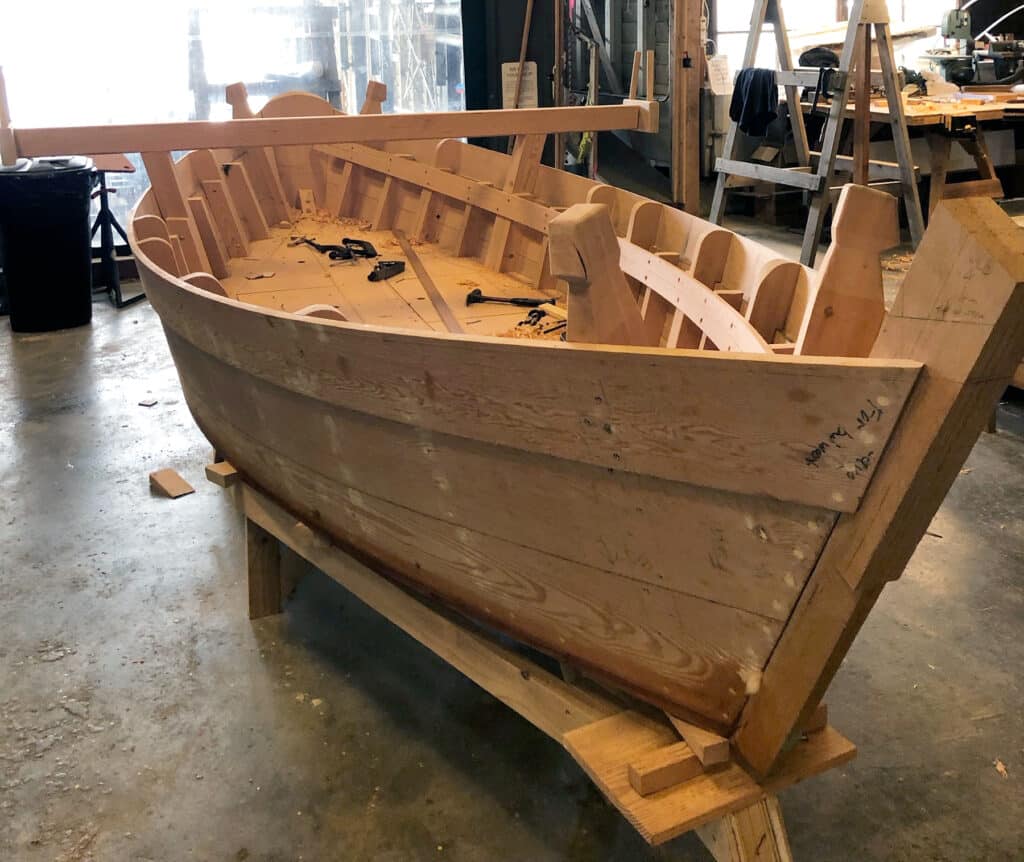
The batana begins to take shape.
